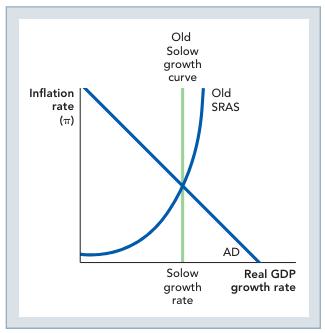Lets consider a case that has some similarities to Figure 33.2. We mentioned that its difficult for
Question:
Let’s consider a case that has some similarities to Figure 33.2. We mentioned that it’s difficult for the Fed to know what’s really happening to the economy in real time. This is similar to the well-known “fog of war,” where wartime news accounts often turn out to be exaggerations of the real story. In this question, the Federal Reserve thinks that consumer pessimism has pushed AD down by 10%, but in reality, the pessimism has only pushed AD down by 5%. pg65
a. In the following figure, illustrate two AD curves: “AD with false shock” (AD-F to save room) and “AD with true shock” (AD-T).

b. If the central bank wants to use monetary policy to reverse a 10% shock to AD, it will have to raise money growth by 10%. Now draw two more AD curves on the figure above: “Fed reacts to false shock” (FR-F to keep it short) and “Fed reacts to true shock”
(FR-T).
c. After the central bank overreacts to the exaggerated news reports of economic calamity, what is the final result: Will real growth be higher or lower than before the shock hit? Will inflation be higher or lower than before the shock hit?
Step by Step Answer:





